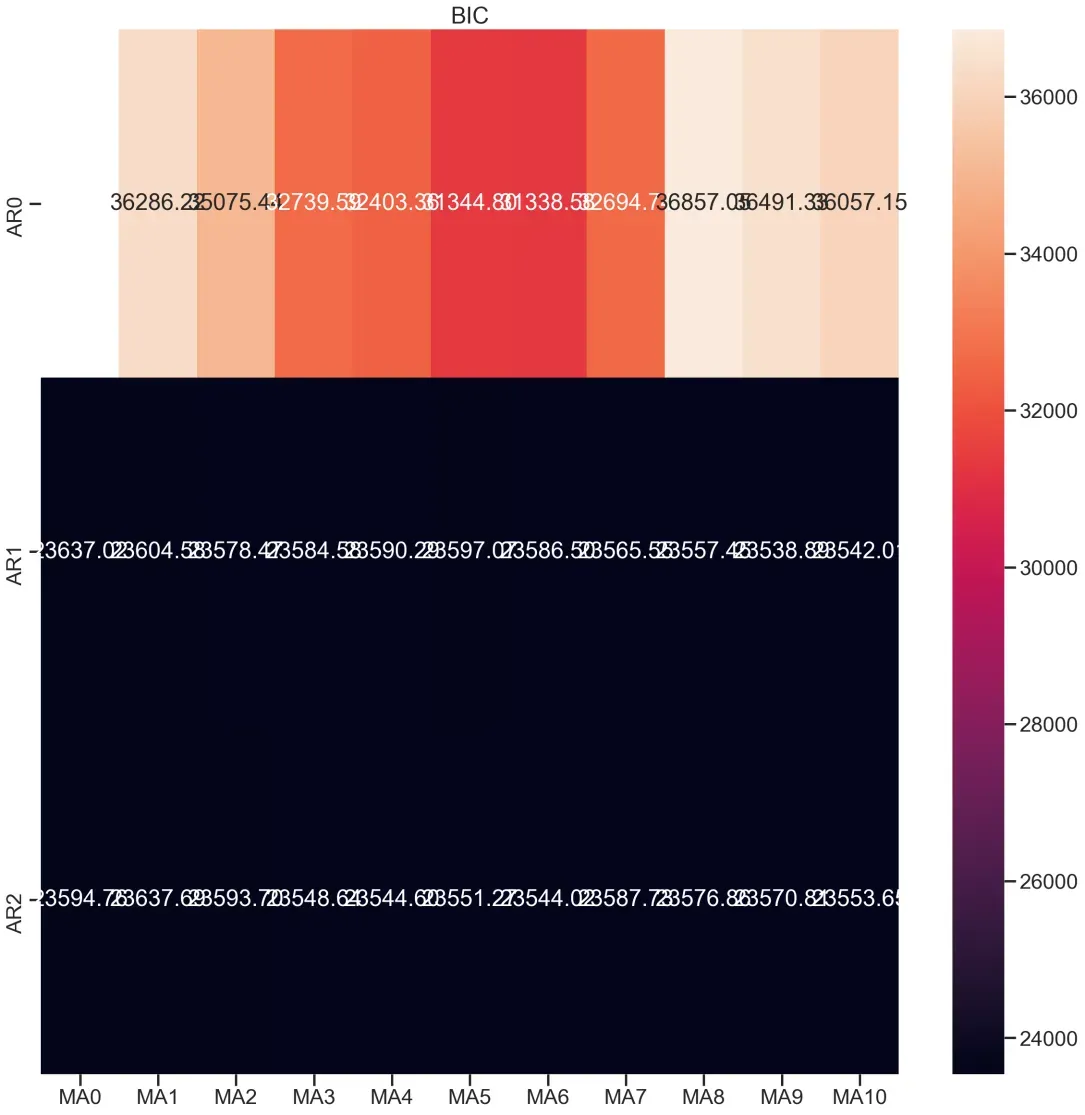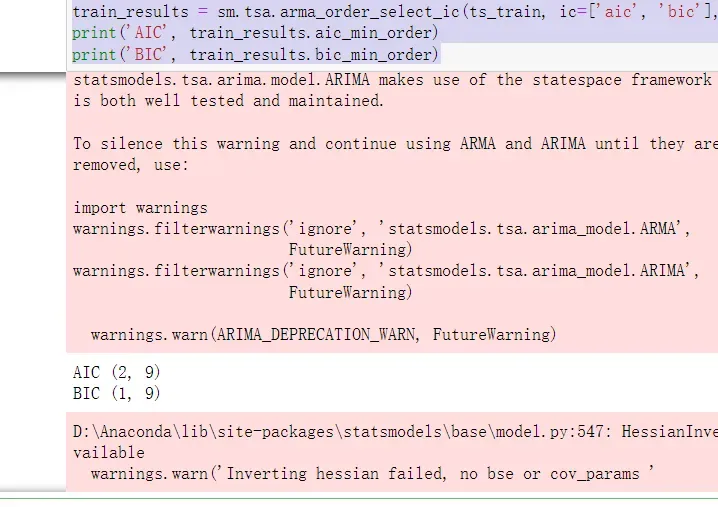BIC贝叶斯信息准则(用于解决ARIMA模型中q、p参数选择问题)
贝叶斯信息准则,也称为Bayesian Information Criterion(BIC)
1.定义和公式
其中k为模型参数的个数,n为样本的数量,L为似然函数。
模型评估标准:BIC值越低越好。
p和q越大时,参数越多,k越大。所以使k越小,p和q越小,保证模型越好。
L越大,使BIC的值越小,所以似然函数越大越好。
二、代码实现
开发环境:Jupyter Anaconda3
首先需要训练一个ARIMA模型来进行估计,这里我选择使用2015年至2020年道琼斯的时间序列数据集。
1、先导入所需第三方库及依赖
%load_ext autoreload
%autoreload 2
%matplotlib inline
%config InlineBackend.figure_format='retina'
from __future__ import absolute_import, division, print_function
import sys
import os
import pandas as pd
import numpy as np
# TSA from Statsmodels
import statsmodels.api as sm
import statsmodels.formula.api as smf
import statsmodels.tsa.api as smt
# Display and Plotting
import matplotlib.pylab as plt
import seaborn as sns
pd.set_option('display.float_format', lambda x: '%.5f' % x) # pandas
np.set_printoptions(precision=5, suppress=True) # numpy
pd.set_option('display.max_columns', 100)
pd.set_option('display.max_rows', 100)
# seaborn plotting style
sns.set(style='ticks', context='poster')
2、导入数据并做一下数据预处理
filename_ts = 'data.csv'
ts_df = pd.read_csv(filename_ts, index_col=0, parse_dates=[0])
n_sample = ts_df.shape[0]
print(ts_df.shape)
print(ts_df.head())
处理后的时间序列数据集如下所示:

3、设置置信区间和需要训练的列
这里我选择闭盘的数据close列
n_train=int(0.95*n_sample)+1
n_forecast=n_sample-n_train
#ts_df
ts_train = ts_df.iloc[:n_train]['close']
ts_test = ts_df.iloc[n_train:]['close']
print(ts_train.shape)
print(ts_test.shape)
print("Training Series:", "\n", ts_train.tail(), "\n")
print("Testing Series:", "\n", ts_test.head())
4、模型评估
获得训练数据集后,您可以执行模型评估
#模型评估
# Fit the model
arima200 = sm.tsa.SARIMAX(ts_train, order=(1,0,0))#order里边的三个参数p,d,q
model_results = arima200.fit()#fit模型
BIC
这里我之前通过绘制ACF和PACF的图像对p、q值的取值范围有了一定的了解,所以p、q值的最大范围做了最小限定。
import itertools
#当多组值都不符合时,遍历多组值,得出最好的值
p_min = 0
d_min = 0
q_min = 0
p_max = 2
d_max = 0
q_max = 10
# Initialize a DataFrame to store the results
results_bic = pd.DataFrame(index=['AR{}'.format(i) for i in range(p_min,p_max+1)],
columns=['MA{}'.format(i) for i in range(q_min,q_max+1)])
for p,d,q in itertools.product(range(p_min,p_max+1),
range(d_min,d_max+1),
range(q_min,q_max+1)):
if p==0 and d==0 and q==0:
results_bic.loc['AR{}'.format(p), 'MA{}'.format(q)] = np.nan
continue
try:
model = sm.tsa.SARIMAX(ts_train, order=(p, d, q),
#enforce_stationarity=False,
#enforce_invertibility=False,
)
results = model.fit()
results_bic.loc['AR{}'.format(p), 'MA{}'.format(q)] = results.bic
except:
continue
results_bic = results_bic[results_bic.columns].astype(float)
可以看一下BIC的输出范围,值越小(黑色区域)越符合,
fig, ax = plt.subplots(figsize=(20, 20))
ax = sns.heatmap(results_bic,
mask=results_bic.isnull(),
ax=ax,
annot=True,
fmt='.2f',
);
ax.set_title('BIC');

这里可以看出我的BIC值范围,其中纵轴AR为自回归模型输出(q的范围),MA为移动平均模型输出(p的范围)
最后输出BIC所判定的p和q的值为1和9。另外还输出了AIC所判定的结果进行对比(在这里不介绍AIC了)。最后我还是通过观察PACF和ACF来进行最终抉择选择BIC输出的q、p值作为参数。
train_results = sm.tsa.arma_order_select_ic(ts_train, ic=['aic', 'bic'], trend='nc', max_ar=2, max_ma=10)
print('AIC', train_results.aic_min_order)
print('BIC', train_results.bic_min_order)

参考https://www.cnblogs.com/tianqizhi/p/9277376.html
文章出处登录后可见!
已经登录?立即刷新
